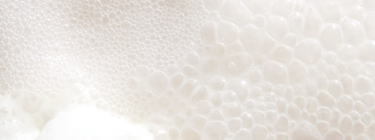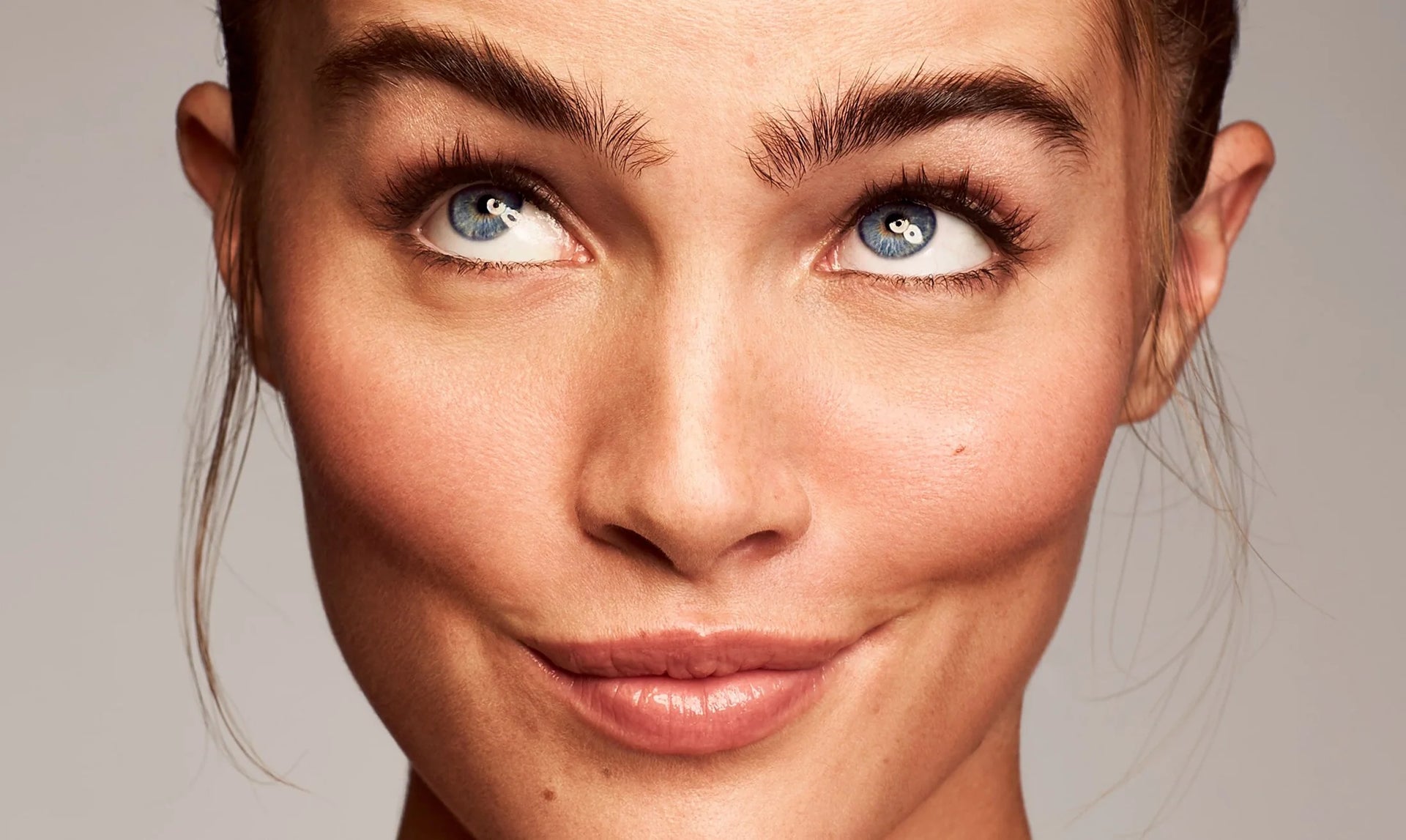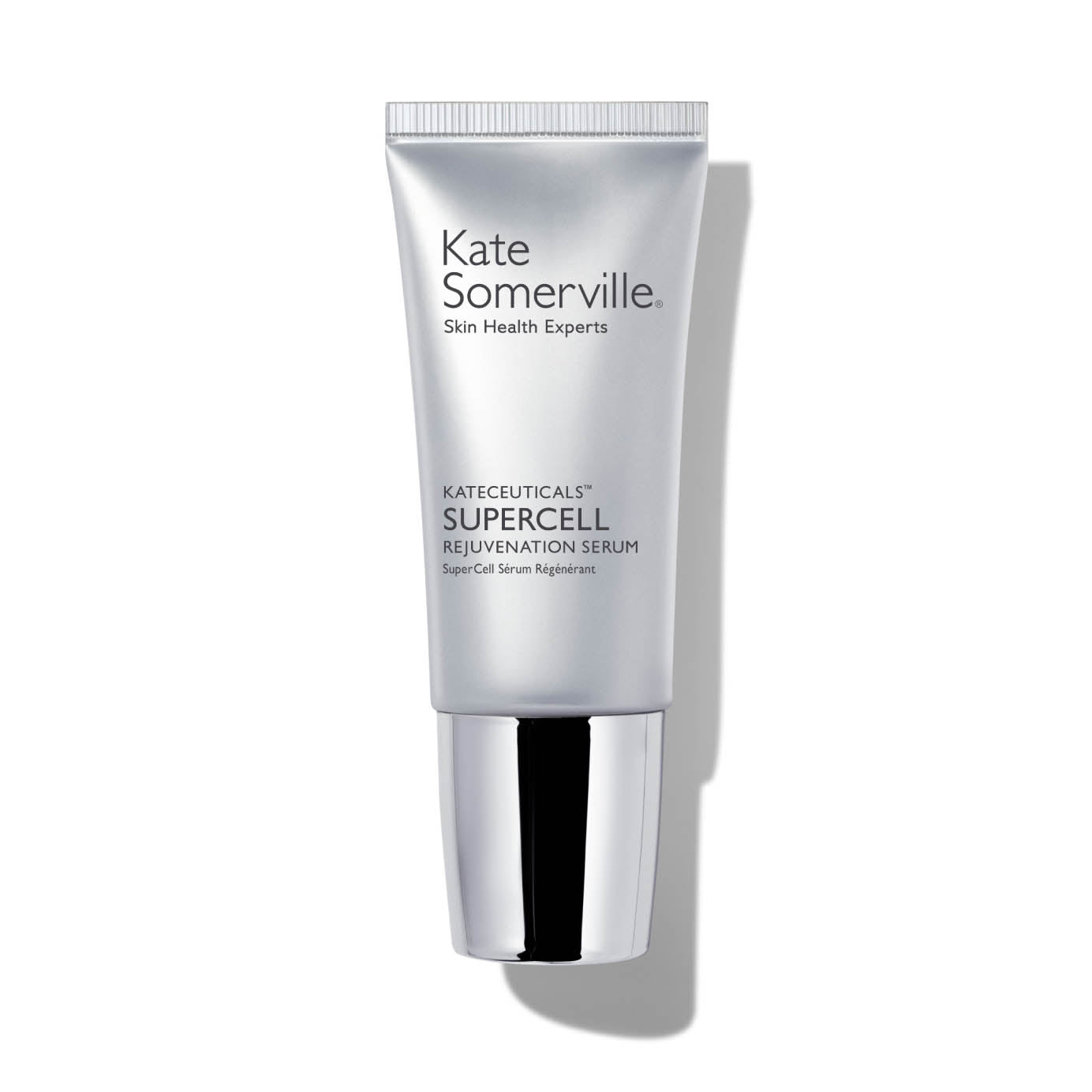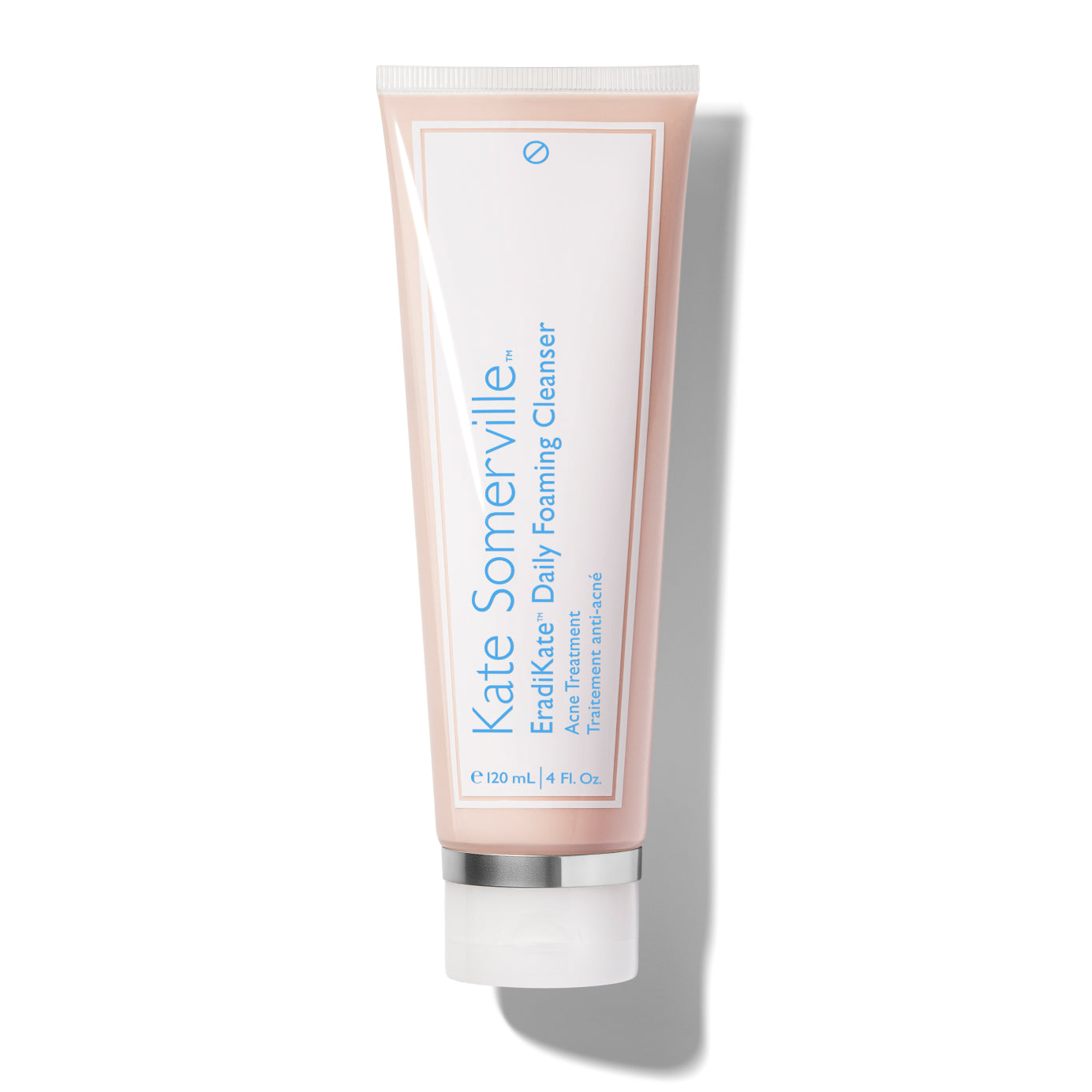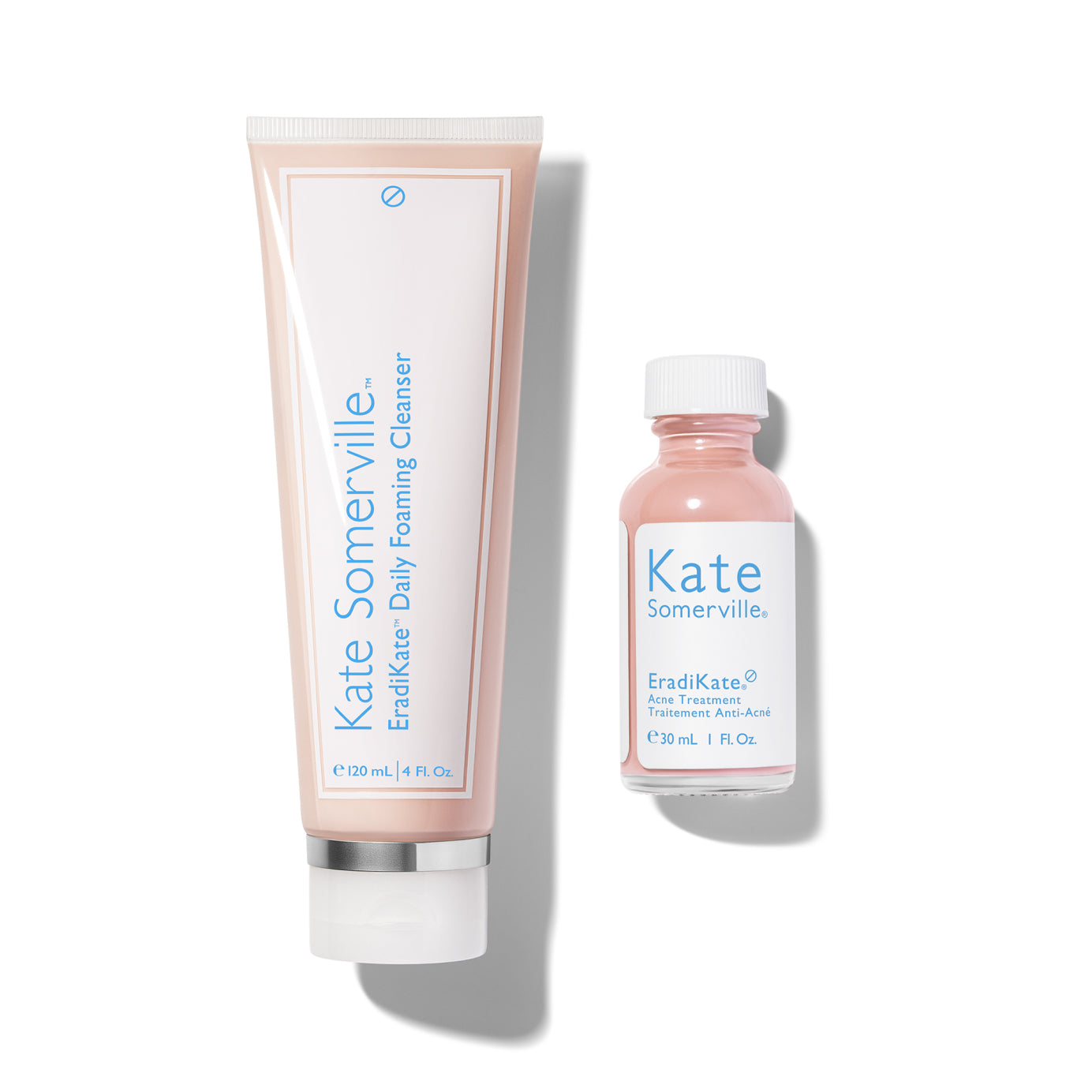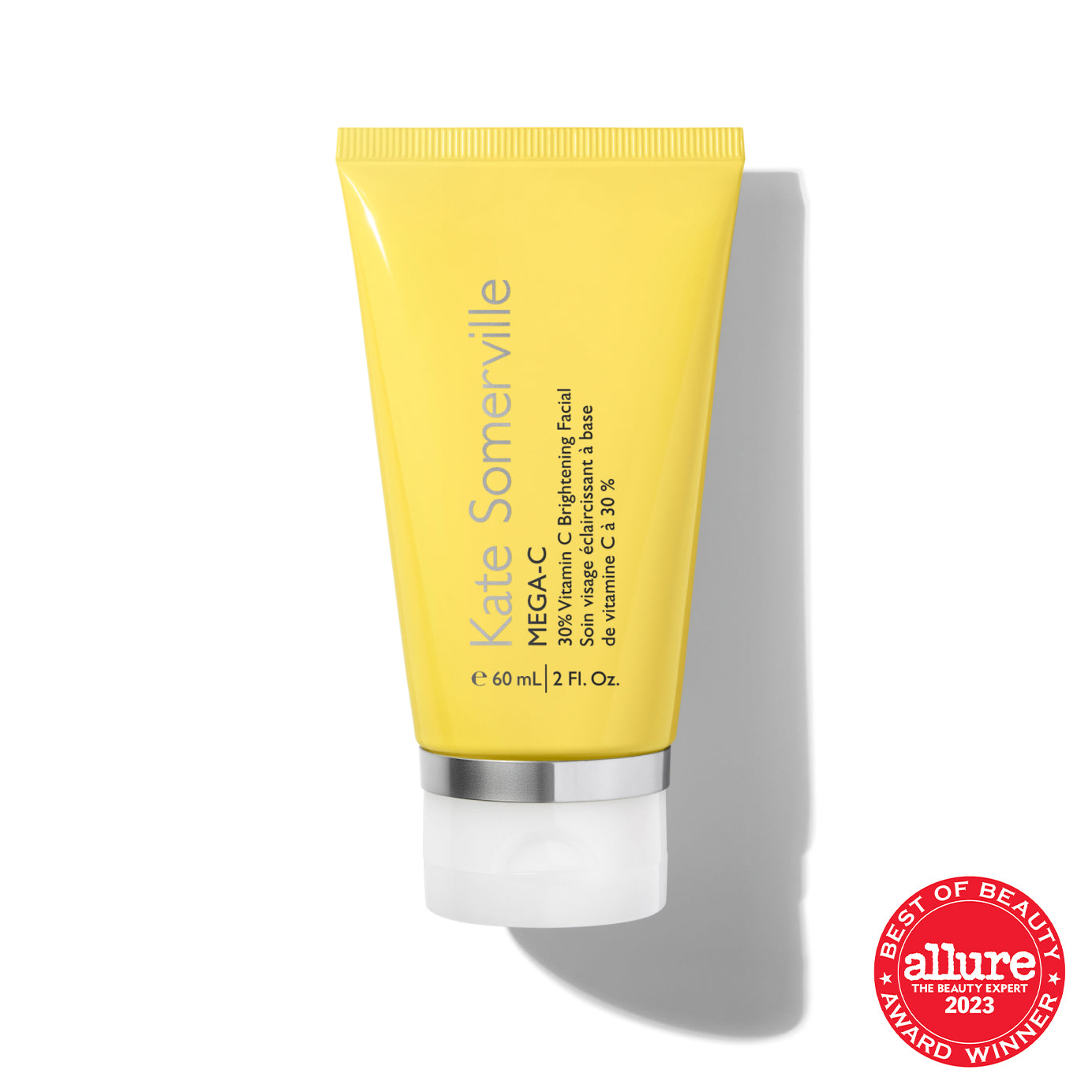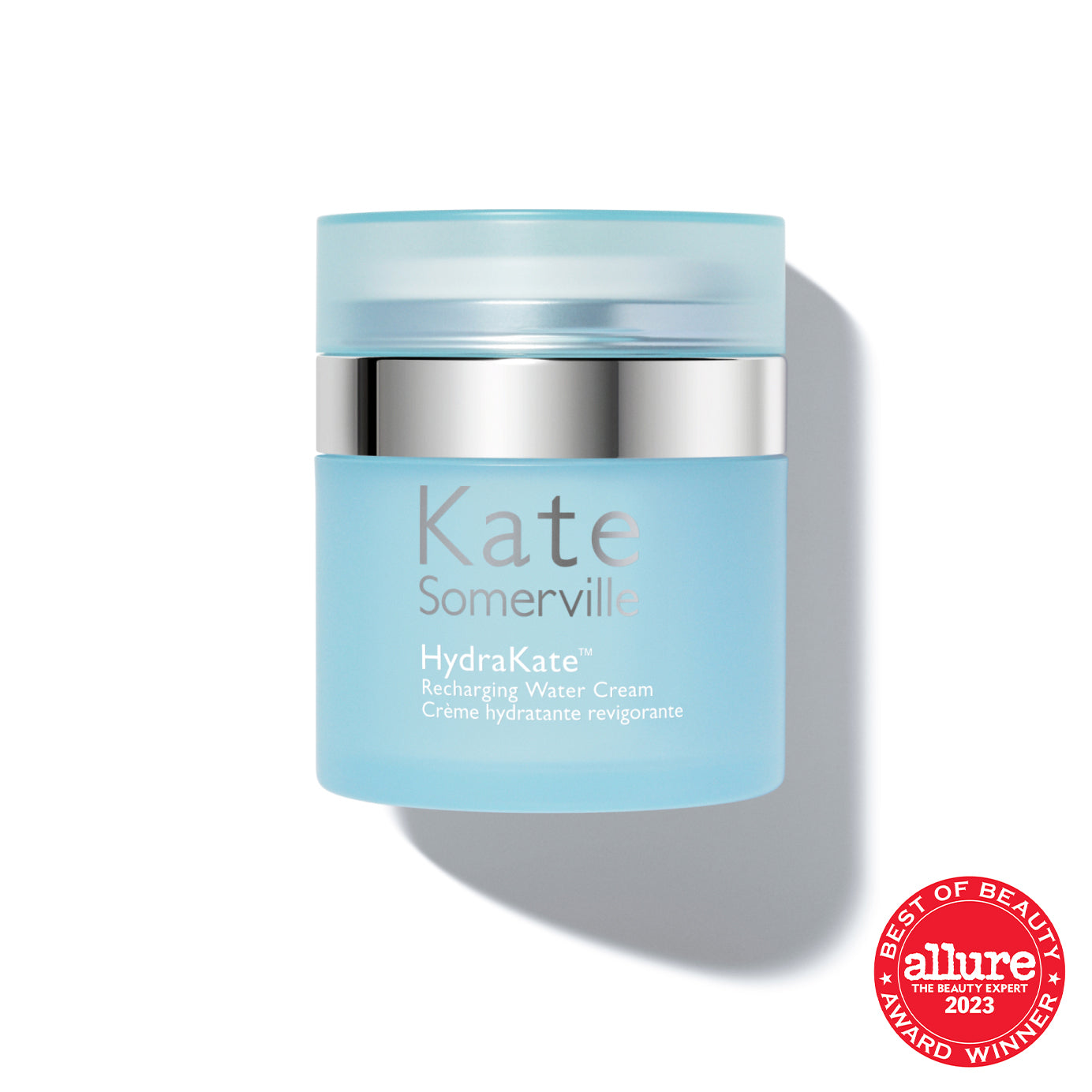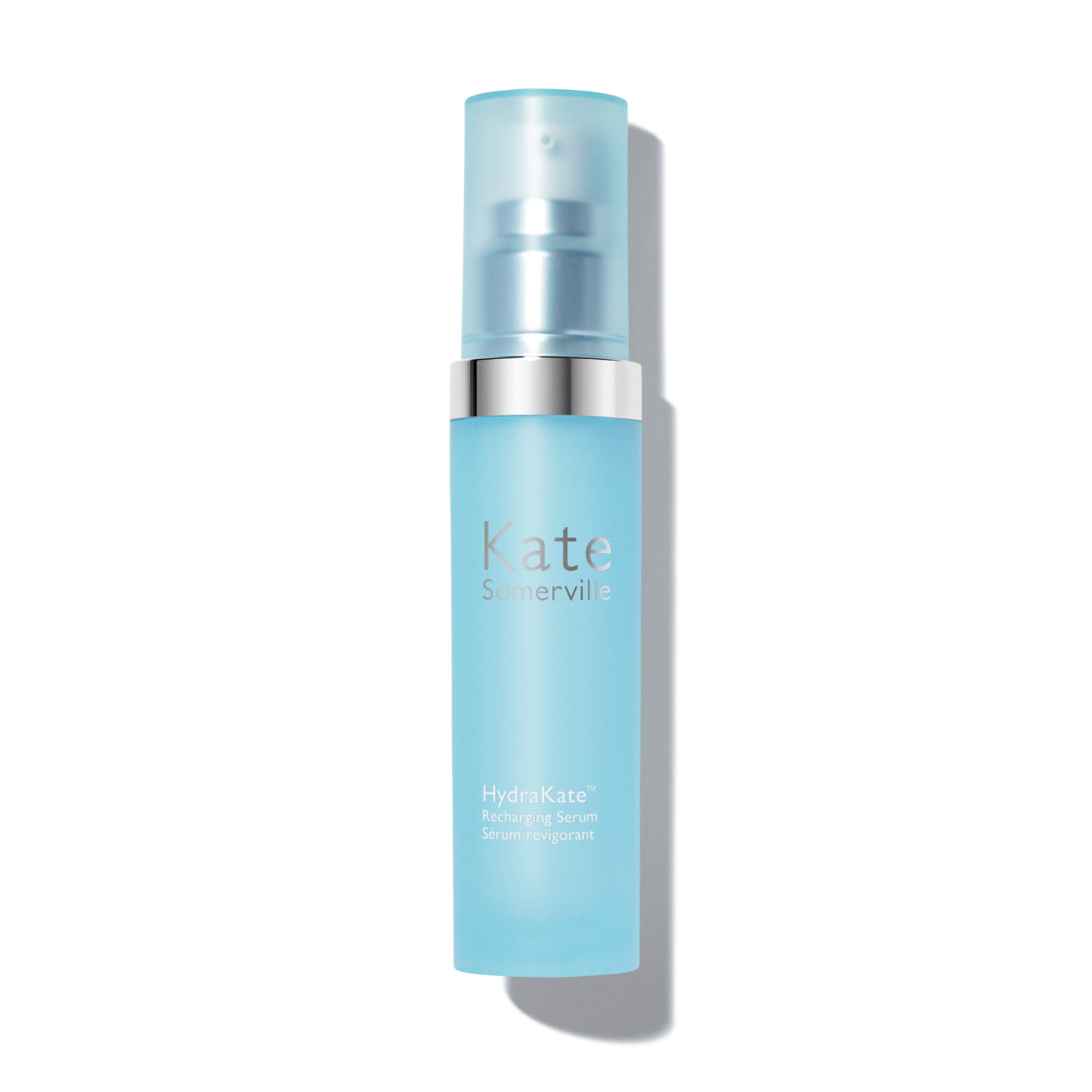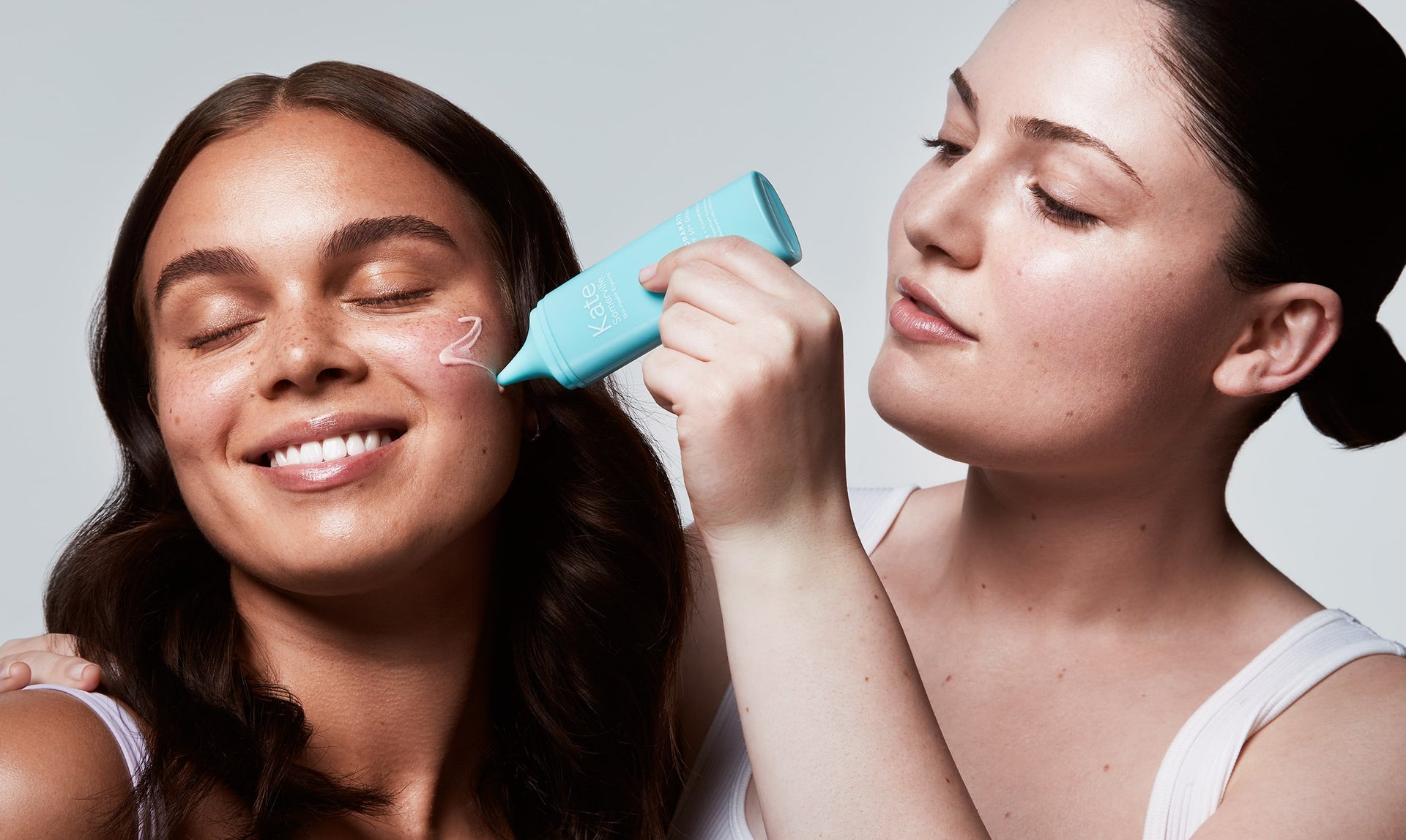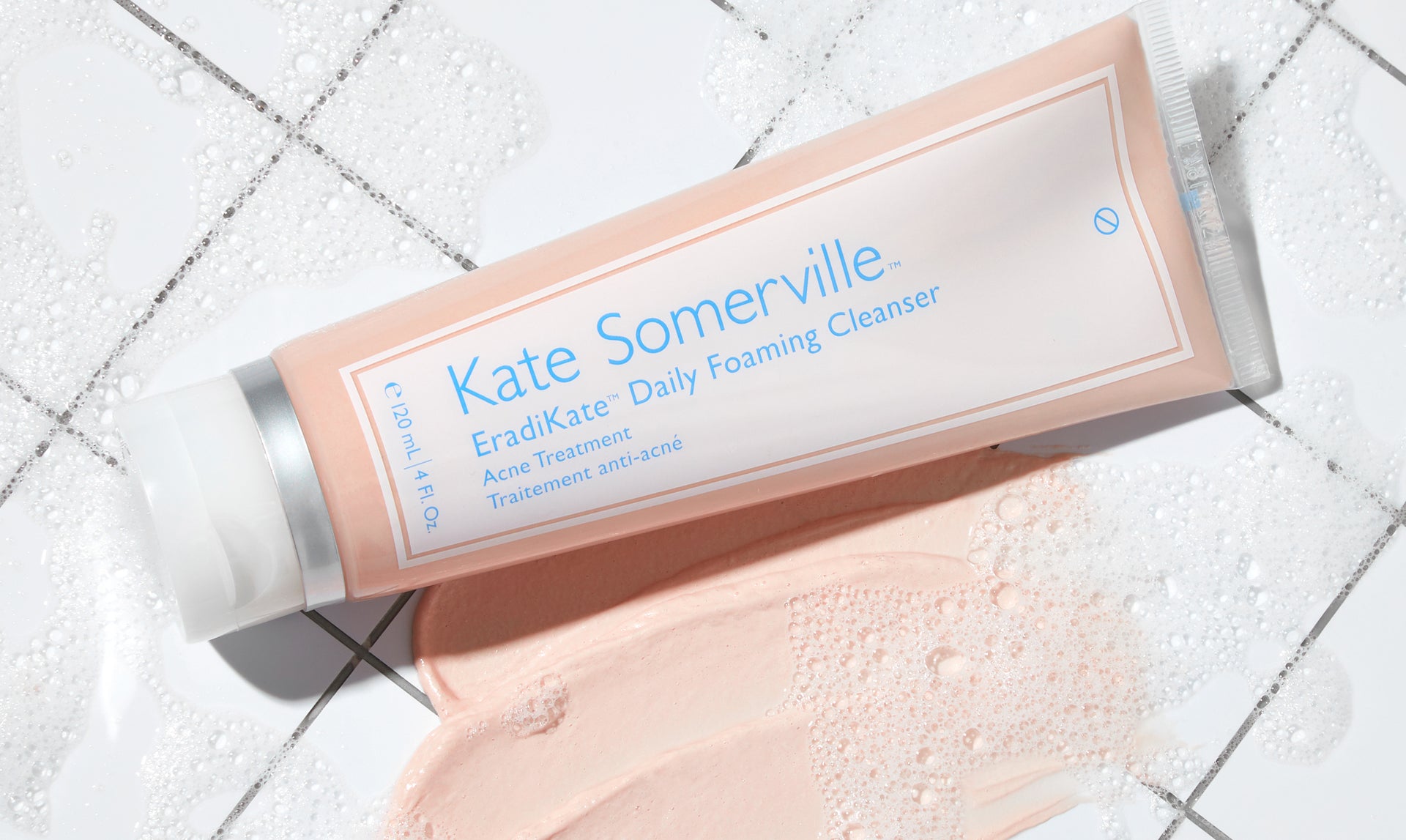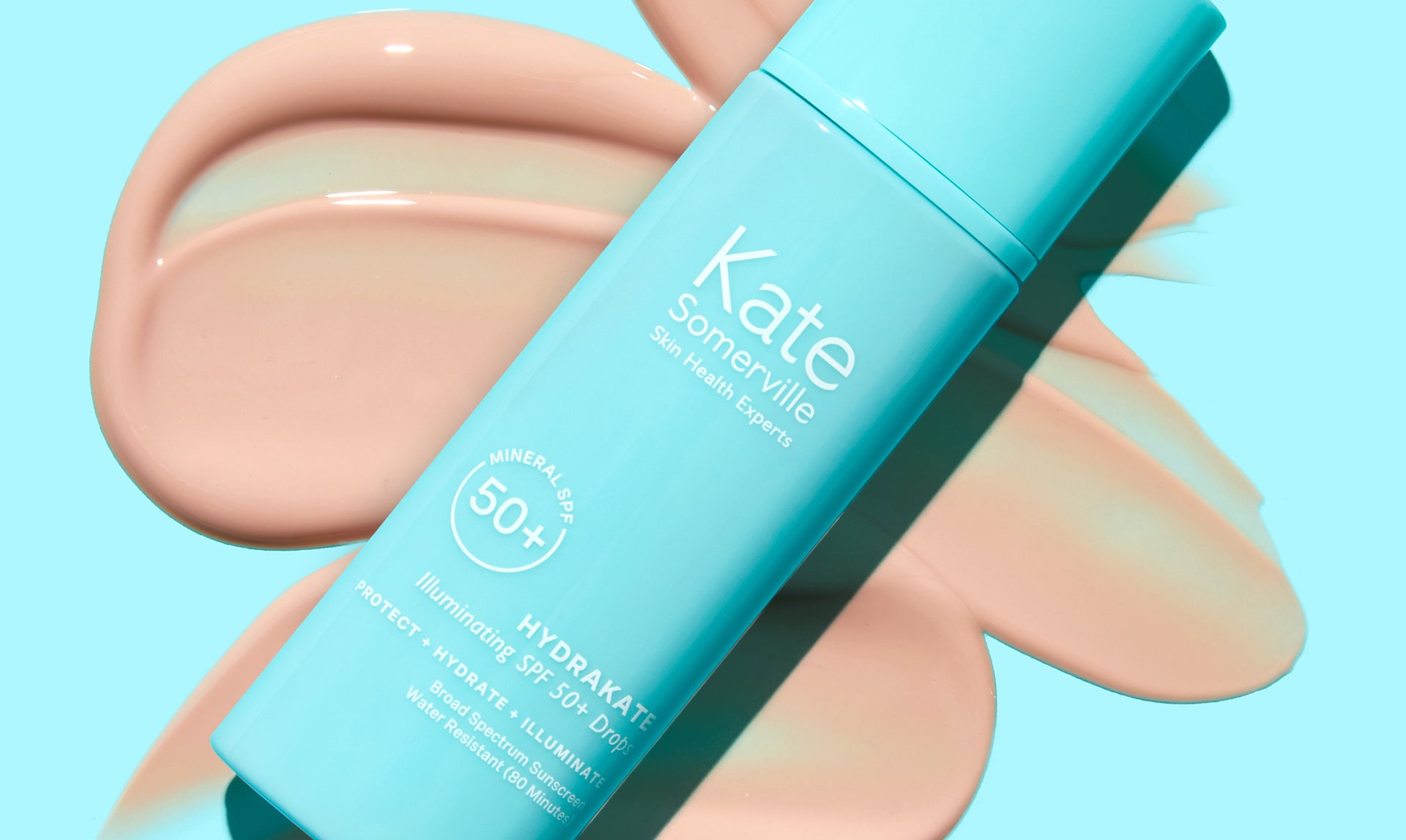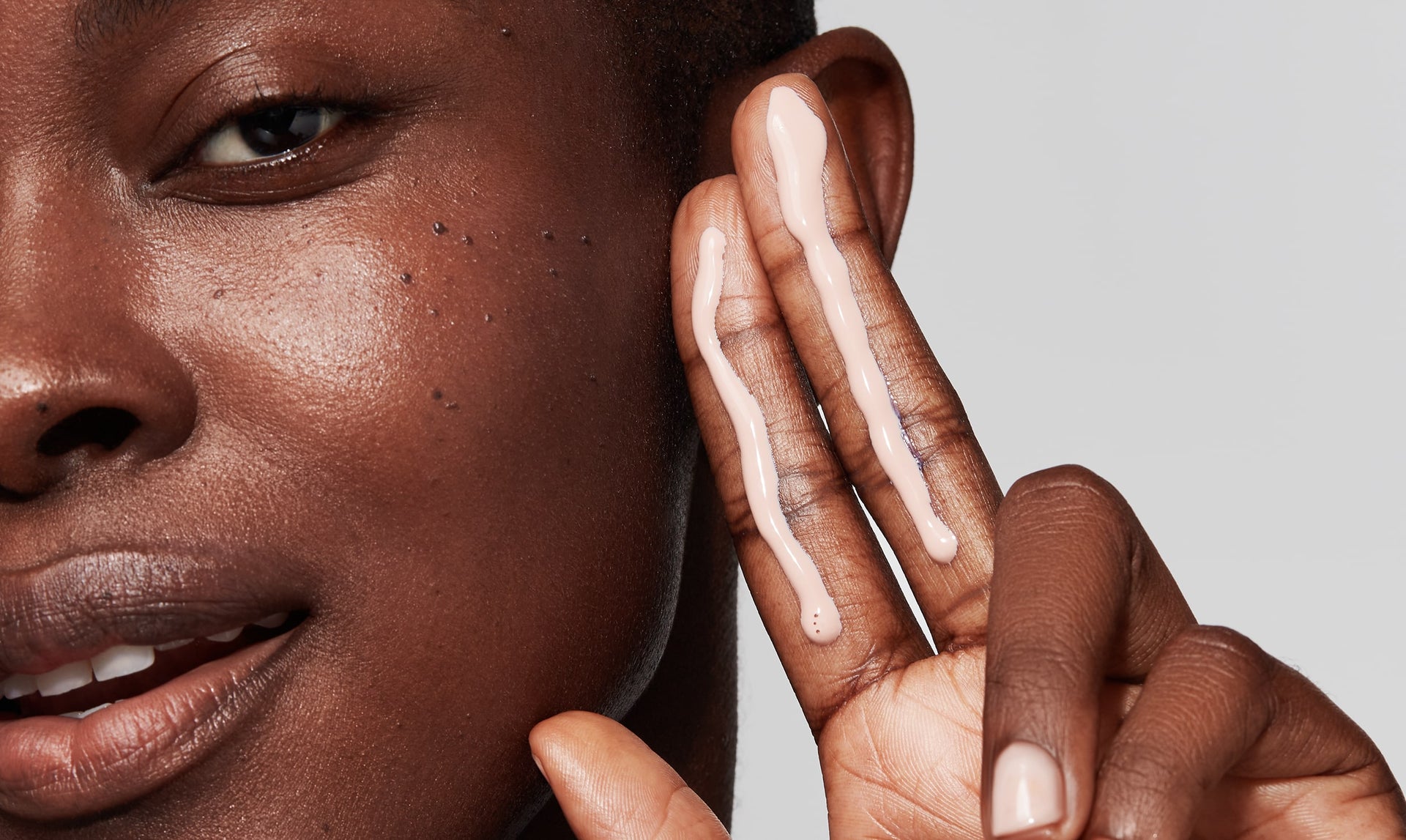Spa facial treatments are often seen as a luxury reserved for special occasions, however many people fail to realize that facials can be an impactful part of a regular skin care routine as well. But it can be easy to get lost in the jargon of a spa treatment menu and feel a little dazed when it comes to figuring out what exactly it is that you need or want. The truth is, there are so many types of facials because they all address varying skin concerns using an array of methods to do so. Thankfully, our skilled estheticians at the Kate Somerville Clinic are well versed in all types of facials and love sharing their knowledge with their customers. Kelly Viavattine, our very own celebrity esthetician and Kate Somerville Skin Health Expert, sat down with us to share some of her favorites.
Types of Facials
1. Classic
A classic or standard facial usually involves cleansing, exfoliating, extractions, a mask, and a moisturizer. Given its calming nature, this facial can be a great choice for anyone with normal to dry skin. Extractions, the process of cleaning out clogged pores, are safe for most skin types, but you will need to ensure the esthetician first uses steam to soften the pores and covers her fingers with gauze. However, anyone with rosacea or eczema should ask to skip the steaming, which can exacerbate those conditions, and use a warm cloth instead. Extractions can pinch and cause slight discomfort, but if the process is too intense, you can simply ask your provider to stop. Our oxygen facial is a great example of a classic plumping and hydrating facial.
2. Lymphatic Massage
Sometimes combined with other treatments, a lymphatic massage facial incorporates gentle kneading of targeted areas of your face. This helps to relieve tension and reduce water retention, therefore minimizing puffiness, by stimulating the lymphatic glands found in your face [1]. Generally speaking, your lymphatic system is an important part of your immune system which aids in the removal of extra fluid and waste from your body. In addition, this type of facial can boost circulation leaving you with a bright, glowing complexion.
3. Electric Current
Just as it sounds, an electric current facial uses a microcurrent device and wet sponges to deliver low levels of electricity to the face and neck. The current naturally helps to contour your face by stimulating and tightening the underlying muscles, making it a less-invasive substitute for other injectables. The result is an anti-aging effect which helps smooth wrinkles and leaves you with a more lifted appearance. According to Kelly, these tightening facials reduce the appearance of damage.
4. Anti-Aging
Very similar to a standard facial, an anti-aging facial utilizes active ingredients and procedures to attack the signs of aging which are present on mature skin – think ages 30 and up. Typically, these facials consist of cleansing, exfoliation or skin resurfacing (often as microdermabrasion treatments), masks, deep-pore cleansing with extractions, and hydration elements. They may also incorporate antioxidant-heavy serums and ingredients like collagen to help revitalize the skin. But be sure to give your skin time to heal after this one as it can lead to flaking and peeling depending on the strength of the various elements.
5. Brightening
If you have ashy, sun damaged, or dull skin a brightening facial can help. Specifically targeting hyperpigmentation, and evens out your complexion using powerful antioxidants such as Vitamin C. The process typically involves a combination of masks, enzyme peels, and acid treatments to remove the build-up of dead skin cells. The result is radiant and glowing skin.
6. LED
Also known as Color Light Therapy, a LED (light-emitting diode) facial harnesses specific wavelengths of light to address breakouts and inflammation making it the perfect facial for acne. In addition, the pain-free technique has been shown to help stimulate cell growth, improve overall complexion, reduce redness, minimize the appearance of sunspots or fine lines, and smooth wrinkles [2]. According to Kelly, “they are noninvasive, have no harmful side effects, and no downtime.”
7. Laser
Finally, we have laser facials which sound a lot more sci-fi than they really are. By using a laser to remove the top layer of skin, this type of facial is able to gently resurface your face and correct minor flaws – hence why it is sometimes referred to as laser resurfacing. A laser facial can be used to minimize the appearance of wrinkles, age spots, uneven skin tone, sun damage, and scars [3].
Selecting a Facial Type
With so many facial skin care treatments available, it can be overwhelming to try and choose one. But hopefully, the above descriptions started to give you an idea of what might be right for you. And the good news is if you begin to incorporate facials into your regular skincare routine, you can try out a number of different facial types. If you are still pondering which facial might be right for you, check out these tips on how to choose the best one for you:
Decide What to Treat
No one facial will be able to treat every single skin concern so start your selection process by deciding which condition you want to treat first. For example, the lotions and massages often associated with a classic facial can actually cause acne breakouts. So, if you are suffering from persistent acne look for words like clarifying or purifying on the treatment menu to identify facials designed for acne-prone skin. Or you might even consider getting a LED facial to combat any active breakouts.
Look for the Right Ingredients
Another trick for finding the right facial on a treatment menu is to pay attention to the ingredients listed. For example, glycolic or enzyme peels can help get rid of the layer of dead skin cells which makes your pores appear larger and wrinkles look deeper. Vitamin C, on the other hand, brightens your overall complexion. If specific ingredients are not listed on the menu, don’t hesitate to ask.
Find the Right Professional
Some facials, are actually considered medical procedures and should be performed by a dermatologist. Others use specialized equipment which requires the administrator to undergo certification to use it. Be sure that you understand these limitations and that you select a professional who is qualified to perform your chosen facial. The right facialist will also have no problem walking you through your options and advising on the right choice.
If you aren’t ready to take the plunge into spa facial treatments or have budgetary restraints that prevent it, you have other options to achieve results at home. Some masks and exfoliating treatments are designed to mimic the effects of a spa treatment but are suitable for personal use such as Kate Somerville’s ExfoliKate®. This powerful product is packed with ingredients that deliver clinically proven results for healthy skin. In fact, 100% of women showed highly significant improvement in the appearance of their skin after just one use. So if you can’t make it to the spa or clinic, don’t worry, there are still plenty of products out there that can give you amazing results!
Sources:
- https://www.uhn.ca/PatientsFamilies/Health_Information/Health_Topics/Documents/Do_Lymphatic_Self-massage_Face_Head_Neck.pdf
- https://www.ncbi.nlm.nih.gov/pmc/articles/PMC3926176/
- https://www.mayoclinic.org/tests-procedures/laser-resurfacing/about/pac-20385114
